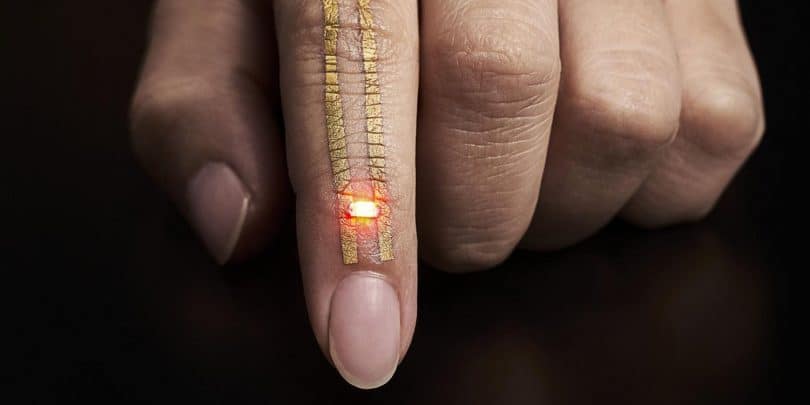A scientist from the University of Tokyo has invented a technology that makes portable circuits possible. And so that you can hardly feel it – a thin layer of the Gold layer applied directly to the skin. This is an advantage especially for patients and athletes because they become more independent.
Loud beeps penetrate the room. It comes from a tower with various machines that are connected to a patient via numerous cables. Nowadays, medical surveillance is taking place in hospitals, for example in intensive care units. This image could disappear in a few years – thanks to the new Gold layer technology of scientists from the University of Tokyo.
Takao Someya, along with his team at the Department of Electric and Electronic Engineering, developed a kind of wearable that significantly reduces monitoring systems and reduces cable leaks. This special wearable technology enables a patient to wear directly on the skin. It consists of polyvinyl alcohol (PVAL is used, among other things, in contact lenses) and of conductive nanostructures of the gold layer.
The PVAL layer can be washed off on the skin after gluing on so that only the gold layer, stretchy “conductor tracks” remain. Through this gold layer, the Japanese scientists send electricity, for example, to transmit data or to illuminate LED lamps. Connected with sensors, this results in a small monitoring system.
In a one-week test with 20 subjects, the researchers found that the gold layer did not itch, or perspired patients. “It is so possible to monitor the vital signs of patients without causing stress or an uncomfortable feeling,” Someya says about his invention. “We have found that the gold layer can be used for long-term monitoring of one week or more.” Someya is a target group for patients or athletes alike.
Constructions or whole system enable directly on the skin is not a new idea. For example, in 2016, the University of Tokyo presented a transparent display for the back of the hand.
And Microsoft, together with the MIT Media Lab, developed temporary tattoos called DuoSkin, which allows devices to be controlled by the gesture. However, the use as a medical monitoring mechanism is a new field, which could change entire sequences, especially in hospitals.







